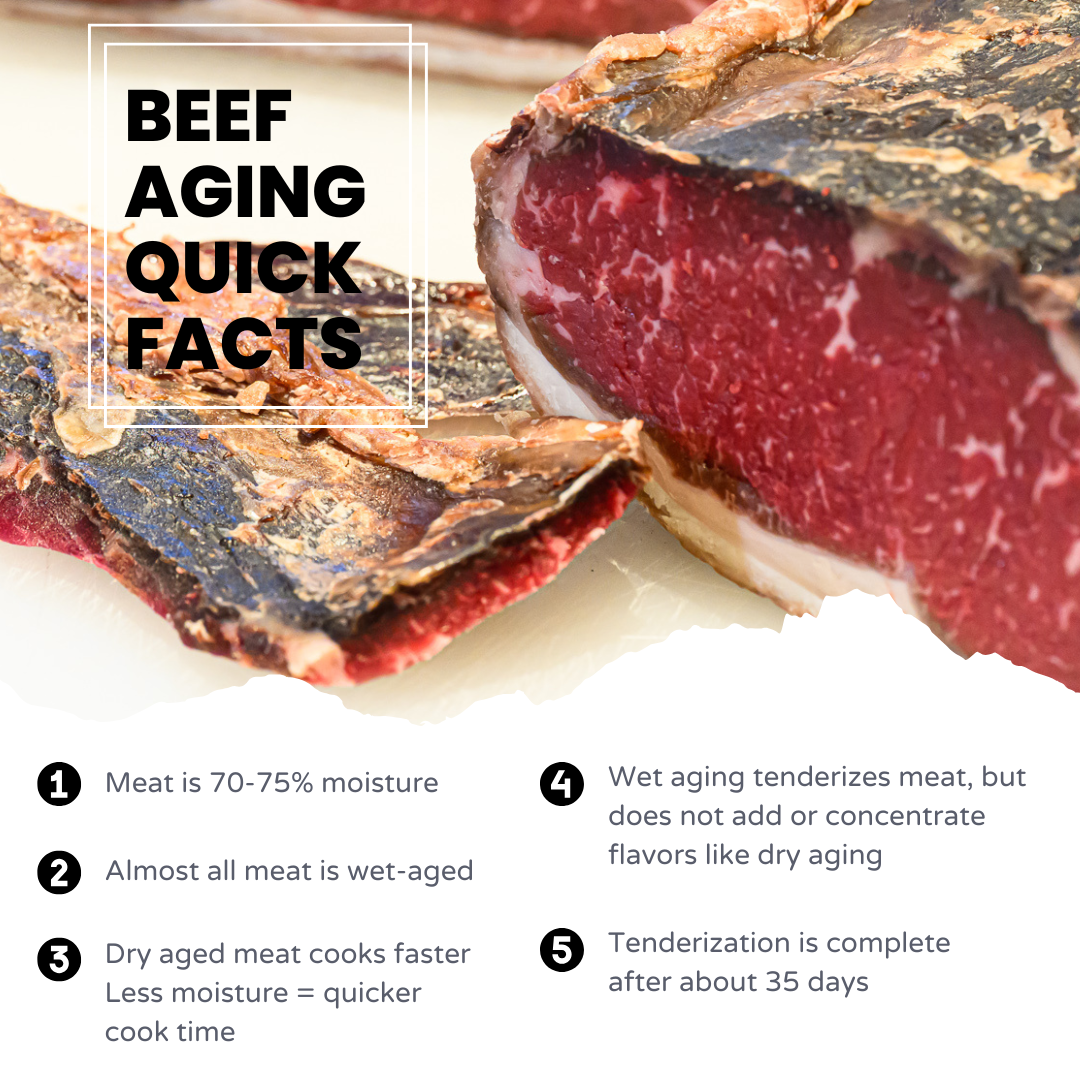A look at the menus of the top steak restaurants around the world will reveal a few common themes – Australian Wagyu and dry aging programs. We chatted up Aussie Beef & Lamb’s Andy Groneman -- a BBQ champion and podcaster in his own right – for a quick primer on all things aging meat. How many days is enough? Can I do this in-house? Is it worth it? And what’s really happening in that aging cabinet?

What is meat aging, and why do we want it?
Both wet and dry aging are natural enzymatic and bacterial processes that work to tenderize and develop the flavor of meat. Wet aging is typically done in a cryovac bag to retain moisture and keep it safe from harmful microbes. While almost all meats are wet aged before you receive it - in transit or in storage - dry aging is typically only done in exceptional circumstances for a discerning customer.
What are the keys to dry aging?
Dry aging requires strict control of temperature, humidity and air flow. Dry aging also concentrates the flavors in meat – if you start with poor quality, you’re only going to make it worse!
Why is dry aged meat so expensive?
With dry aging, you are pulling moisture out of the meat and concentrating flavor. As you do so, you’re losing weight and yield, as much as 30-40%. So that 12-pound striploin you paid for by the pound is now closer to 8 pounds of usable meat.
What makes aging meat worth it?
When done right, dry aging does some marvelous things to good meat. You can get umami, rich roasted notes, mushroom flavors, deep beefiness and nuttiness, and enhanced juiciness in eating quality.
What can you do to minimize trim, or make it useful?
Using bone-in meats helps – the bone side won’t be exposed to air, so you don’t lose usable meat while you’re getting flavor development. You can literally render fat caps from dry-aged meat useful…it makes amazing tallow!
How long is enough with dry aging?
It’s all subjective, but for me the sweet spot is around 35 days – 14 is the minimum to get enhanced eating quality, and those coveted mushroom and umami notes start to show up at around 30 days. Much longer than that, and the benefits don’t outweigh the loss in yield.
Can you dry age lamb?
Yes! Aussie lamb in North America is already fully wet-aged in transit, but a little extra dry aging for flavor is amazing.
For a more in-depth exploration of meat aging, ask us about an Aussie Meat Academy session in your city or operation!

